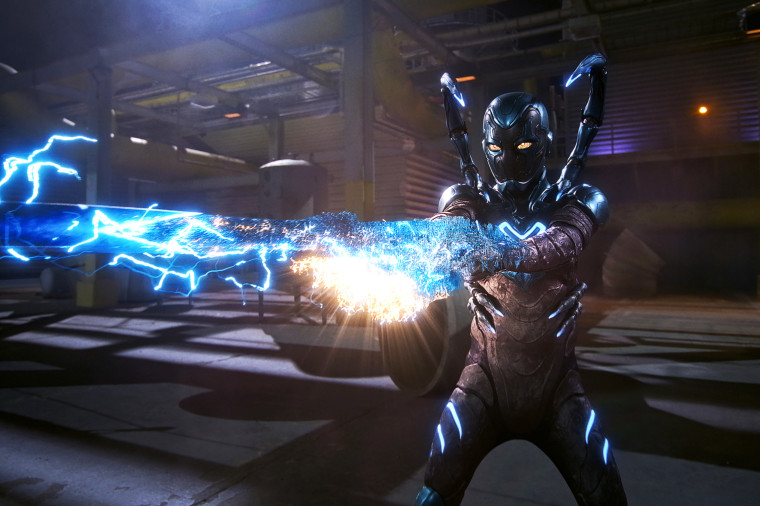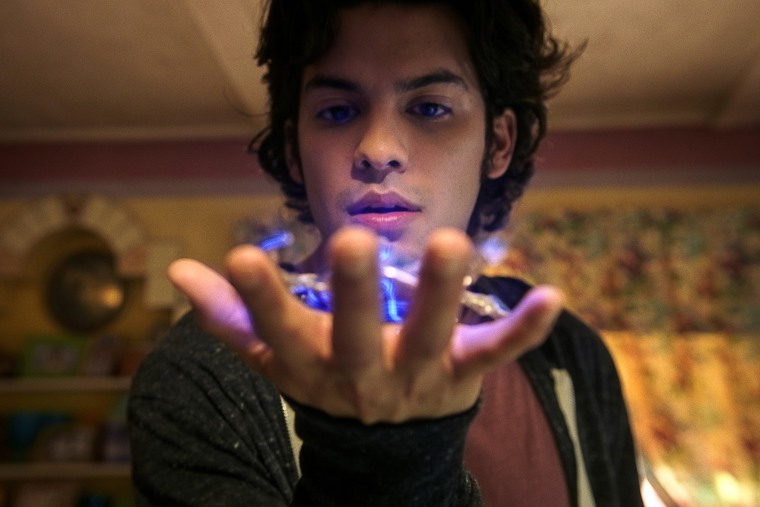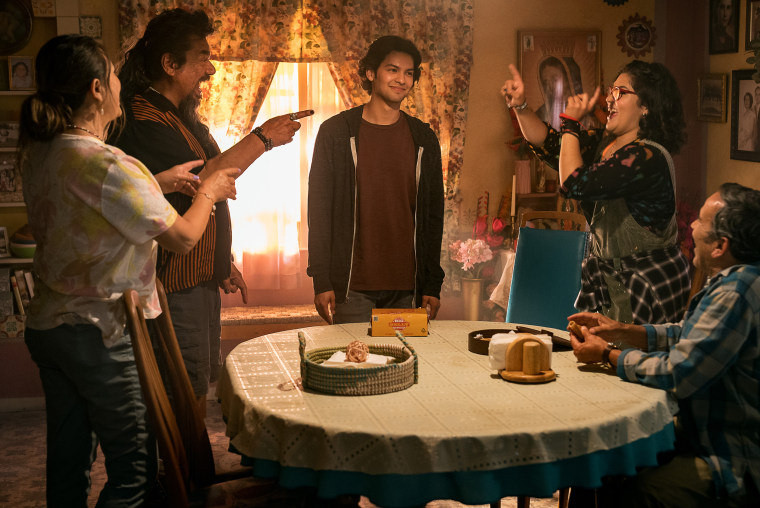If predictions hold true that “Blue Beetle,” the new summer blockbuster from the DC franchise will knock out “Barbie” from the top box office slot this weekend, it would prove what I and others have been saying for years: Give Latino creatives the big budget chances and they will deliver. “Blue Beetle,” which opened Friday, is directed by Puerto Rican Ángel Manuel Soto, written by Mexican Gareth Dunnet-Alcocer and features the fabulous Cuban-Mexican-Ecuadorian Xolo Maridueña of “Cobra Kai” fame as a bonafide non-animated (sorry, Miles Morales) Latino superhero.
Described by one reviewer as exactly what the “struggling” DC franchise needs, “Blue Beetle,” even more importantly, is a game changer for Latino representation and a prompt to Hollywood to stop recycling stereotypes,
Maridueña stars as Jaime Reyes, who gets his own power suit of armor from a relic known as the Scarab to transform into the Blue Beetle superhero. In the film, Reyes returns to his fictional hometown of Palmera City, which Soto said was inspired by the real city of El Paso, Texas, where moviegoers get to know his multigenerational family members who present an endearing experience that just feels right to U.S. Latinos thirsting to see more of themselves onscreen.
Described by one reviewer as exactly what the “struggling” DC franchise needs, “Blue Beetle,” even more importantly, is a game changer for Latino representation and a prompt to Hollywood to stop recycling stereotypes, reducing U.S. Latinos to side characters and telling trite stories that lack cultural complexity and fail to speak to our communities.

Film critic Carlos Aguilar tweeted that he was “impressed by pop culture details and historical references,” noting that “this is the work of filmmakers who know and care about Latin America.”
As Soto explained to USA Today, “We wanted to get the story right because we felt our Latinidad was just authentically ourselves.” He said, “I did not have to try to be Latin, and a lot of what happens in the movie are experiences the actors have had because they’re Latino too.” The movie isn’t trying to “beat you with the Latino card because we are Latino,” he added.
Unnanmed Latino organizations have come together to give away tickets for “Blue Beetle” to people who otherwise not be able to see the movie. This has become one way that people in groups that have historically been ignored by Hollywood are making sure that when Hollywood decides to do things differently, it will be rewarded.
This has become one way that people in groups that have historically been ignored by Hollywood are making sure that when Hollywood decides to do things differently, it will be rewarded.
In 2020, the #BlackPantherChallenge raised more than $300,000 to give children the opportunity to watch that movie. In 2022, a single Black church in Virginia bought out eight screens of the sequel “Wakanda Forever.” This year, #winwithblackwomen launched the effort to buy out theaters to support the live-action “The Little Mermaid,” which featured a Black woman, Halle Bailey, as the lead.
This is how important representation is to people who’ve seen so few positive portrayals of themselves at the movies.
In addition to the ticket giveaway, there’s another Latino-driven effort that’s intended to support the film. The SAF-AFTRA and WGA strikes means that writers and actors cannot do press to support the movies that they wrote or appeared in. So, as Variety reports, 27 Latino organizations have signed an open letter urging people to see “Blue Beetle.”

“Stories are more than entertainment,” the letter says. “They are a powerful tool for social change that fuels our collective movement to build a more equitable, just world for those who have been historically underrepresented and marginalized. Actors, writers, and directors are essential to this work….While we’re encouraged by some of the changes we have seen in recent years, we continue to deal with the repercussions from years of being actively erased and invisible on screen.”
Recent data back up the letter’s claims.
Citing a 2022 diversity study by the Latino Donor Collaborative (LDC), the Hollywood Reporter wrote that “Latin representation in television and film has dropped to 2019 levels.” The latest film study from the University of Southern California’s Annenberg Inclusion Initiative also calls out the dearth of representation. Anneberg founder and report co-author Stacy Smith told NPR in a recent interview, “These legacy companies need to reimagine the way that they’re doing business to represent the world around them, and that’s currently not the status quo.”
At this point, to ignore the need for greater diversity in Hollywood is to ignore the market itself.
At this point, to ignore the need for greater diversity in Hollywood is to ignore the market itself.
The 2022 LDC study said Latinos account for 30% of all moviegoers and 27% of all streaming audiences. Even with the Hollywood strikes, there appears to be a new “Latino boom” that is likely to continue to grow. The representation argument is valid by itself, but producing more authentically representative stories will be excellent for business.
More importantly, though, “Blue Beetle” will shine a light on the realities of the nation’s estimated 63.7 million U.S. Latinos, realities that are supported by new data released this week by the Pew Research Center. Just as we are introduced to different generations of Reyes family members in the film, U.S. Latinos in this country are changing. They are younger (median age, 29), more English-dominant (72%, 5 and older) and not first-generation immigrants (32%).
In fact, Pew noted, “About 81% of Hispanics living in the country in 2021 were U.S. citizens, up from 74% in 2010.”
As the U.S. Latino community continues to evolve and become more engrained in the fabric of this country’s next few decades, movies like “Blue Beetle” are part of the foundation, given how much entertainment directly impacts our society.
On a personal level, one of the reasons I am running to see the movie this weekend is because Soto filmed some of the scenes in Puerto Rico, where he and I grew up. It’s not surprising to hear about the anticipation for the movie back on the island. Never before have we had one of us do a movie like this.

